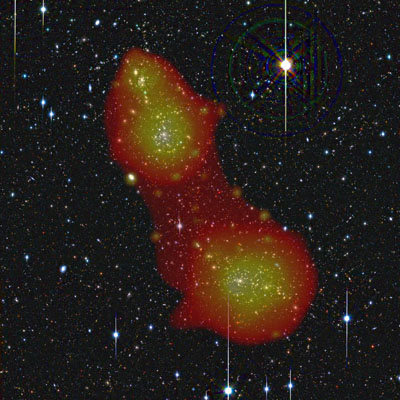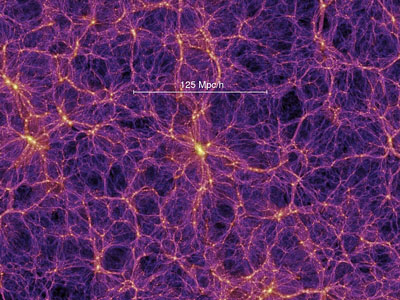Apart from the dark matter and dark energy that make up most of the mass in the universe, half of the "normal" matter made of atoms has not been found to date

The matter known to us in the form of atoms constitutes only 5% of the universe. The rest of the universe is made of elusive matter that we do not know: dark matter (23%), and dark energy (72%). And even of that 5% normal material we barely know half. All the stars, galaxies and interstellar gas observed in the universe provides only half of the matter that should be there.
About ten years ago, scientists predicted that the other half of the "normal" matter exists in the form of low-density gas that fills the vast spaces between the galaxies. The European Space Agency announced that the XMM-Newton space telescope, which photographs at X-ray frequencies, discovered the low-density but high-temperature material.
The universe has been described as a cosmic web. The dense parts of the network are made of galaxy clusters, which are the largest objects in the universe. The astronomers suspect that the low-density gas fills the gaps in the network. However, due to the low density, it is very difficult to discover the gas particles. Thanks to Newton's high sensitivity, the astronomers were able to discover the hot parts of this gas.

Astronomers used the Newton Space Telescope to observe a pair of galaxy clusters - Abel 222 and Abel 223, located about 230 million light years from Earth. When the image and spectrum of the system revealed a bridge of hot gas connecting the two clusters. The gas we see in this bridge or the filling is probably the hottest and most compressed part of the gas in the cosmic web, which we believe constitutes half of the baryonic matter in the universe," says Norbert Werner from the SRON Institute for Space Research in the Netherlands, the lead researcher in the article in which the find was reported.
The discovery of this hot gas will improve the understanding of the evolution of the cosmic web. And this is just the beginning, says Warner, "to understand the distribution of matter within the cosmic web, we need to find more systems similar to this one. And in the end, the launch pad will have a dedicated space for observing the cosmic web, which will contain much more sensitive instruments than the current missions. Our results will allow us to characterize more precise and more reliable requirements from those new tasks."
